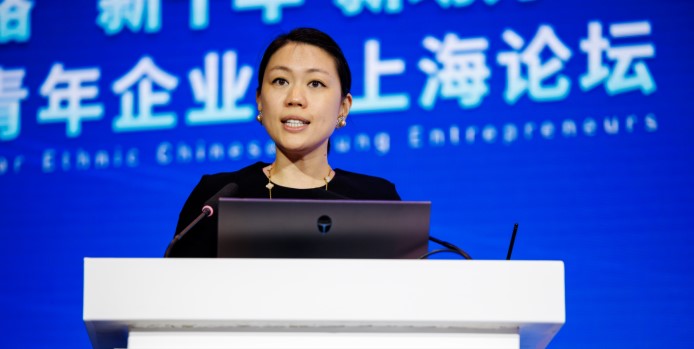Sustainable finance is rapidly evolving, especially within regions like Asia and the Middle East, where unique regulatory landscapes and market needs are shaping a diverse range of financing mechanisms. The inaugural Middle East-Asia Summit in October 2024, hosted by First Abu Dhabi Bank (FAB), served as a pivotal gathering for industry leaders to address the urgent need for adopting sustainable practices and share insights on how companies can intertwine sustainability goals with financial strategies to drive meaningful progress.
The panellists included Patrick Tan, Head of Banking at RGE; Andy Yap, Partner at ERM; and Tan Szue Hann, Head of Sustainability (Real Estate Division) at Keppel Land. The session was moderated by Sarah Pirzada Usmani, Managing Director, Global Head of Loan Capital Markets & Sustainable Finance at FAB.
Understanding the taxonomy of sustainable finance
One of the primary discussions revolved around understanding the structure and taxonomy of sustainable finance, focusing on bonds and loans. The “Use of Proceeds” bonds direct financing to projects accountable for green or social initiatives, making them easier to track. On the other hand, “Sustainability-Linked” financing ties financial terms to specific ESG performance targets, which uses a carrot and stick approach.
Beyond the structure and taxonomy, according to Patrick, sustainable finance is more than a tool; it is fundamental to RGE’s operations: “Producing sustainably is crucial because, if we don’t, customers will remove us from the supply chain. ESG is not something ‘nice to have’ for us; it’s about the core of our business.” This perspective underscores the importance and relevance of ESG to business viability – a sentiment that resonates across industries these days.
The growth of sustainable financing in Asia and the Middle East
As sustainable finance gains traction, Asia and the Middle East emerge as two regions adopting unique, yet parallel, approaches. Andy noted that while traditionally, much attention is often placed on debt instruments, particularly bonds and loans, though it can also extend to other forms such as project finance and carbon market funding. “We’ve seen this significant shift from simply allocating funds to green projects to embedding sustainability principles directly into the terms of financing,” he said.
Despite recent high interest rates, Andy sees resilience in the market: “We’ve had steady growth despite economic turbulence, indicating sustainable finance is here to stay.” Asia and the Gulf Cooperation Council (GCC), which account for approximately US$30-40 billion in green bond issuances, share similar adoption levels but differ slightly in approach. Andy explains, “In ASEAN, we see a bit more focus on social bonds, but overall, both regions prioritise green investments in energy and infrastructure.” This cross-regional emphasis on sustainable finance suggests an upward trajectory for green financing, further mainstreaming ESG considerations in financing.
Embedding ESG in financing strategies
One key aspect of RGE’s approach highlighted by Patrick is its use of sustainability-linked loans (SLLs) to tap into the Middle East markets for its financing needs. In the company’s recent US$1 billion SLL, a part of the funding came from the Middle East, according to Patrick. He also highlighted the potential of Islamic loans, which is a significant and growing segment of the global financial landscape.
From a real estate perspective, Szue Hann shared that sustainability metrics can be quite precise and rigorous. However, by linking financial incentives directly to sustainability performance, businesses can unlock new opportunities for growth while contributing to global decarbonisation efforts. Green building certifications, such as Singapore’s Green Mark, Australia’s Green Star and similar frameworks in the United Arab Emirates and China, have set specific performance requirements based on climatic conditions that could extend beyond real estate to other sectors, such as manufacturing and data centres.
Andy further highlighted how second-party verifications challenge firms to align ESG targets with sectoral relevance, while also benchmarking against regional and global leaders. For example, the adoption of specific taxonomies, like Singapore’s, enhances credibility and coherence in ESG reporting.
Beyond financing: achieving real-world impact
For forward-thinking companies, ESG integration is not merely a compliance measure; it is woven into the fabric of their operational DNA. Patrick quoted an example of how RGE has leveraged new business opportunities by adopting a waste-to-value strategy. Through its agribusiness, RGE transforms agriculture waste and residue and used cooking oil into second generation (2G) feedstock for the production of Sustainable Aviation Fuel (SAF). This approach contributes to addressing the feedstock supply gap, decarbonisation of the aviation industry and a more sustainable global aviation industry.
Patrick further cited a self-taxation model by RGE to support its conservation efforts that span over 500,000 hectares of peatland forest – six times the size of Singapore. This initiative aligns with RGE’s broader sustainability framework, which emphasises the protection of high conservation value forests and responsible management practices. This strategy shows that sustainable ventures can drive both resilience and significant financial returns.
Paving the way for sustainable transformation
The momentum behind sustainable finance is clear, with companies increasingly embedding ESG commitments into financing terms – a reflection of their growing dedication to a more sustainable global economy.
Looking ahead, the rise of green financing will not only drive greater transparency and credibility but will also enable organisations to meet their environmental objectives in impactful ways. This transformation underscores the broader realisation that financial viability and meaningful, real-world impact can go hand in hand on the path toward sustainability.






